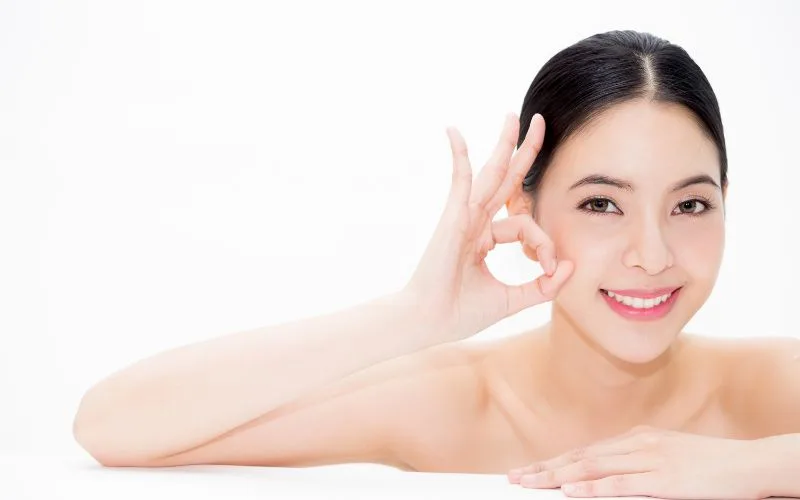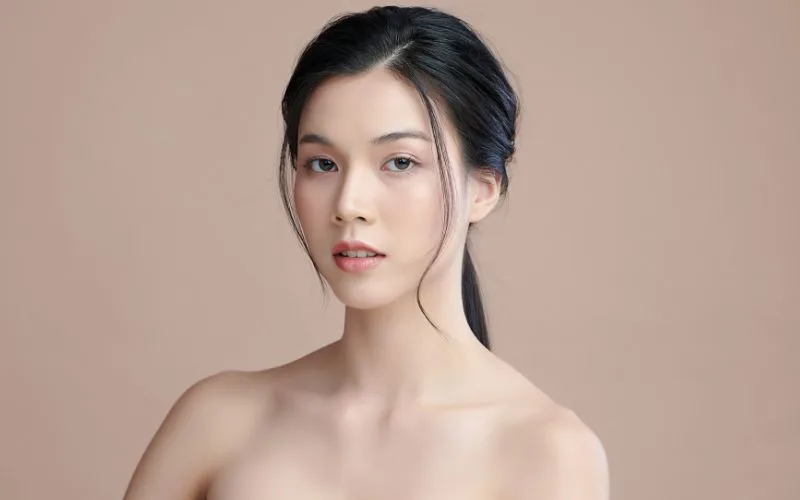You’re getting enough sleep. You’re drinking water, eating well, managing stress. Yet people keep asking if you’re tired or if everything’s okay. You look in the mirror and see the same thing—an exhausted version of yourself that doesn’t match how you actually feel. The culprit often isn’t fatigue at all. It’s facial volume loss, a structural change that creates the specific shadows, hollows, and contours our brains interpret as tiredness.
This connection between volume loss and appearing tired reveals something fundamental about how we read faces. We don’t just look at individual features—we unconsciously process the interplay of light, shadow, and three-dimensional shape. When facial volume diminishes, it alters this geometry in ways that trigger an immediate “tired” perception, even when someone is fully rested and energetic.
Why Faces Look Tired: The Geometry of Fatigue
The appearance of fatigue has distinct visual markers. Dark circles under the eyes. Hollow temples. Flattened cheeks. A general sense of the face having “fallen.” These features combine to create what we recognize instantly as a tired appearance. What’s interesting is that these same visual markers appear with facial fat loss, even in people who aren’t remotely tired. The reason connects to how volume loss alters facial topography.
A youthful face has specific volume distribution: fullness in the cheeks, smooth temples, filled tear troughs, rounded contours. This creates an even surface that reflects light uniformly. As volume decreases, the face develops concavities—areas that recede and create shadows. Shadows under the eyes deepen because the fat pad that normally fills this area shrinks, allowing the orbital bone to become more visible. Temples develop a hollow because the temporal fat pad diminishes. Cheeks flatten as midface fat compartments deflate.
The Anatomy of Volume Loss
Understanding face volume loss requires looking at what actually changes beneath the skin. Many people assume aging primarily involves skin loosening or wrinkling, but volume depletion drives much of what we perceive as aging. The face contains multiple fat compartments—distinct pockets of adipose tissue separated by fibrous barriers. These aren’t uniformly distributed; they exist in specific locations that create youthful facial contours. The main compartments include the temporal fat pad, the malar (cheek) fat pad, the nasolabial fat, the jowl fat, and several smaller compartments around the eyes and mouth.
Starting around age 30, these fat compartments begin to shrink at different rates. The temporal fat pad often deflates first, creating hollow temples. The malar fat pad descends and diminishes, leading to flattened cheeks and more prominent nasolabial folds. The periorbital fat—around the eyes—redistributes or atrophies, causing tear trough hollowness and making dark circles more apparent. Bone resorption compounds the problem.
Research shows that facial bones actually lose volume with age, particularly around the eye sockets, cheekbones, and jawline. This removes structural support that fat and skin previously rested upon, creating a double deflation effect. Collagen loss in face tissue adds another layer. As the structural protein network in the dermis degrades, skin becomes thinner and less able to mask the volume changes occurring in deeper layers. Fat loss in cheeks becomes more visible when skin loses the thickness and elasticity that once camouflaged minor contour irregularities. The combined effect creates the hollowed, shadowed appearance we associate with exhaustion, even though the person might be sleeping eight hours nightly and feeling perfectly energetic.
Tear Trough Hollowness and Dark Circles
Perhaps no single feature makes someone look more tired than pronounced tear troughs—the hollow valley that forms between the lower eyelid and cheek. This creates the dreaded dark circles that no amount of concealer fully hides. The tear trough exists because of the junction between the eyelid fat compartment and the cheek fat compartment.
In youth, these compartments are full enough that the transition appears smooth. As volume depletes, the ligament attaching skin to bone in this area becomes more visible, creating a distinct trough. When the underlying support diminishes, this thin skin can’t mask the underlying anatomy. Blood vessels become more visible. The shadow from the hollow itself appears as discoloration. The effect is compounded by midface volume loss.
As cheek fat descends and deflates, the contrast between the hollow under-eye area and the now-flatter cheek becomes more pronounced. This creates a longer, deeper shadow that extends further down the face. People with tear trough hollowness consistently report being asked if they’re tired, even after a full night’s sleep. The visual signal is so strong that it overrides all other indicators of how the person actually feels.
Cheek Flattening With Age and Its Impact
The mid-face might be the most crucial area for maintaining a rested appearance. Midface volume loss—specifically the deflation and descent of cheek fat—produces several changes that collectively create a tired look. Young cheeks have what’s called the “triangle of youth”: apex at the highest point of the cheekbone, with the base extending downward and outward.
This creates a lifted, full appearance with the greatest volume in the upper cheek. With aging and facial volume loss, this triangle inverts. Volume shifts downward. The upper cheek flattens while the lower cheek gains volume, creating jowls. The apex moves from the cheekbone to the area around the mouth.
This inversion has profound effects on appearance. The flattened upper cheek removes support for the lower eyelid, worsening tear troughs. It creates or deepens nasolabial folds—the lines running from nose to mouth—because the cheek tissue that once filled this area descends. The loss creates a gaunt appearance through the mid-face that reads as unhealthy or exhausted.
Addressing Facial Volume Loss
Understanding the connection between volume loss and appearing tired naturally leads to questions about whether these changes can be addressed. Multiple approaches exist, working through different mechanisms to restore facial volume. The fundamental challenge is that natural fat and bone loss can’t simply be reversed through lifestyle changes alone. While maintaining overall health supports tissue quality, it doesn’t restore depleted fat compartments or resorbed bone. Addressing volume loss requires intervention that either replaces lost volume directly or stimulates the body to produce new structural tissue.
Facial Volume Treatment Options for Volume Restoration
Several facial volume treatments each working through distinct mechanisms to address different aspects and severities of volume loss.
Fillers for Targeted Volume Replacement
Dermal fillers provide immediate volume restoration by introducing gel-like substances into specific facial areas. They work particularly well for addressing localized volume deficits and can be strategically placed to recreate youthful facial contours.
Undereye filler targets the tear trough area — the hollow between the lower eyelid and cheek — which often deepens with age due to fat pad depletion and skin thinning. This hollowing casts shadows that create a tired, sunken appearance, even in well-rested individuals. By carefully placing filler beneath the skin in this region, volume is restored to smooth the contour transition between the lower eyelid and cheek. The treatment reduces dark circles caused by shadowing and minimizes the appearance of under-eye bags, creating a brighter, more refreshed look.
Cheek filler addresses midface volume loss directly. By replenishing the malar fat pad area, it recreates the lifted triangle of youth, restoring the high, full cheekbones associated with a rested appearance. This provides structural support that reduces nasolabial fold depth and tear trough prominence.
Temple filler corrects temporal hollowing by replacing depleted fat pad volume. This restores the smooth contour between forehead and cheekbone, eliminating the gaunt appearance that ages the face. Laugh line filler specifically targets nasolabial folds—the lines from nose to mouth. This removes the downturned, heavy appearance around the mouth that contributes to looking tired.
Chin filler restores definition to the lower face when volume loss has blurred the jawline and chin projection. A well-defined chin balances facial proportions and creates the sharp contours associated with alertness and energy. Forehead filler addresses surface irregularities and hollowing that can develop in the forehead region. Strategic volume placement can smooth the forehead contour and lift the brow position slightly, opening the eyes and reducing the heavy-lidded appearance of fatigue.
Lip filler serves multiple functions in addressing tired appearance. Full lips balance the face when midface volume has depleted. The lips naturally thin with age and volume loss; maintaining their fullness preserves facial harmony and prevents the pinched, drawn appearance that contributes to looking exhausted.
Collagen Stimulators for Gradual, Natural Restoration
While fillers provide immediate volume, collagen stimulators work through a different mechanism—triggering the body to produce new tissue over time. Ellansé collagen stimulator offers dual-action volume restoration. The initial carrier gel provides immediate correction while polycaprolactone (PCL) microspheres stimulate gradual collagen production. This makes it particularly effective for areas needing both immediate improvement and long-term structural rebuilding. Sculptra collagen stimulator works through poly-L-lactic acid (PLLA). Rather than providing immediate volume, Sculptra stimulates fibroblasts to produce new collagen over several months. The gradual process makes it ideal for addressing diffuse volume loss across larger areas.
Choosing the Right Approach
Selecting between fillers and collagen stimulators—or using them in combination—depends on several factors: the pattern of volume loss, your desired timeline, age, tissue quality, and maintenance preferences.
What to Expect From Volume Restoration Treatment
Filler treatments typically take 30-45 minutes with results visible immediately. Collagen stimulator treatments take similar appointment times but results appear gradually over 2–6 months. Properly placed treatment recreates youthful facial architecture. Most people hear comments like “You look well-rested!” rather than “Did you get work done?”
Maintaining Results and Supporting Facial Volume
Sun protection, nutrition, stable weight, avoiding smoking, and good sleep support long-term results. These habits extend facial volume treatment outcomes and help slow further facial volume loss.
Take the Next Step
If people keep asking if you’re tired when you’re actually well-rested, facial volume loss may be the cause. At Kowayo Aesthetic Clinic, we provide thorough consultations to assess your facial structure and recommend tailored facial volume treatment—whether fillers, collagen stimulators like Ellansé or Sculptra, or a combination. Contact us today to restore your natural rested look.



